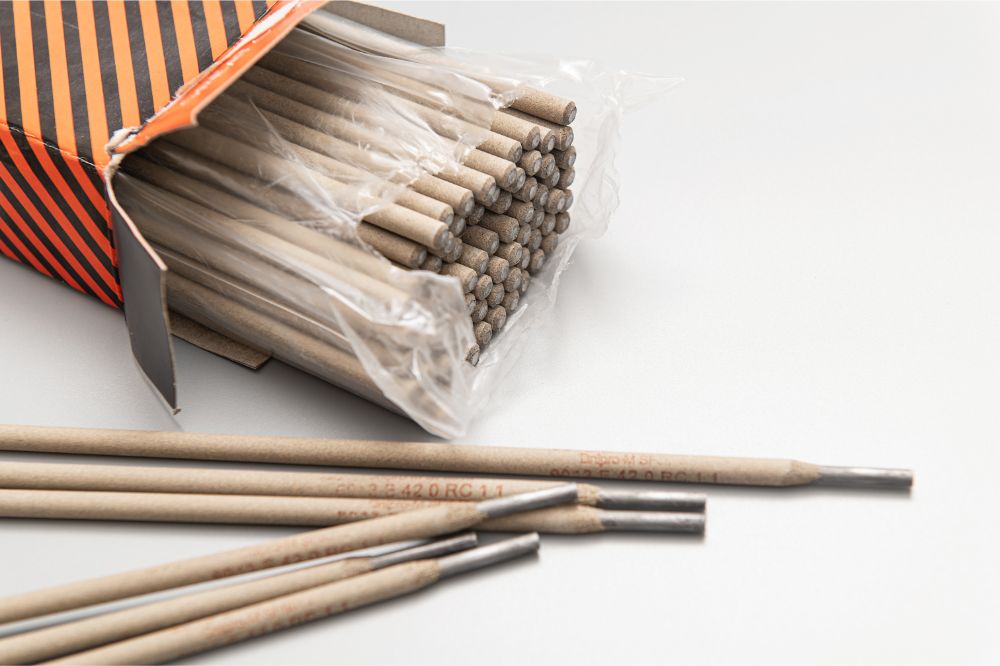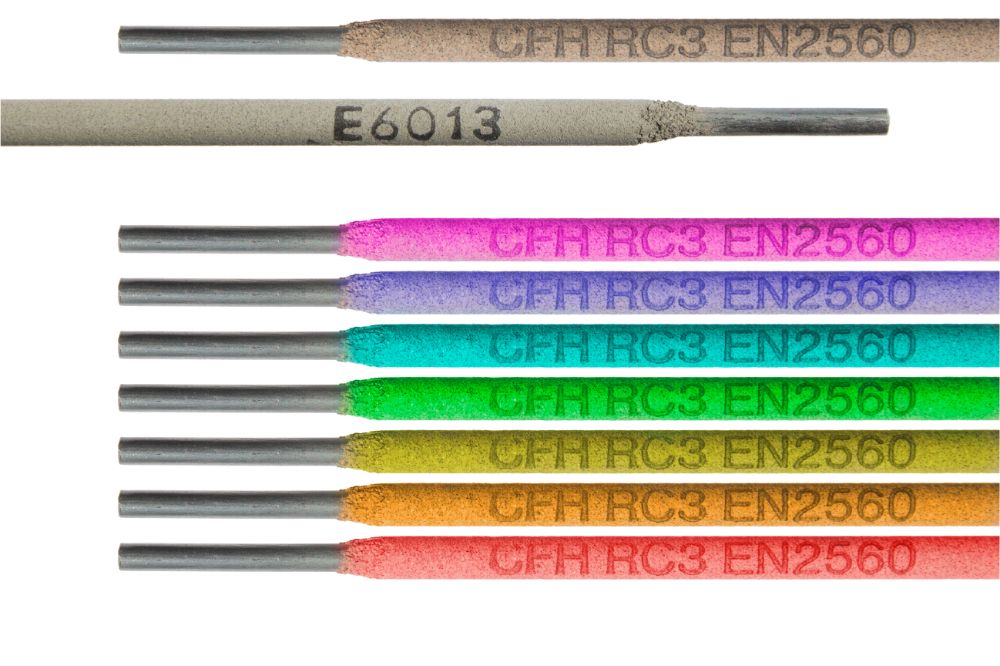While welding, you often don’t think about the numbers on the rod. As you hold the stinger and place the beads within the joint, besides your welding expertise and machine knowledge, many other variables impact how well the weld will perform. The first step is to choose the right electrode.
This electrode has a code on the side. From the perspective of a layman, this is probably confusing. However, regardless of your experience level, you should be familiar with at least some of the electrode types. Here we will look at what the numbers on welding rods mean.
Codes for Smaw Coatings
Electrodes with a coating or current 0 through 8 are identified by their numbers. In this instance, the number 0 refers to a high cellulose sodium rod suitable for DC+ applications. In the case of a number 1 electrode, potassium cellulose electrodes can tolerate the presence of any type of current.
You can operate a high titania sodium rod with number 2 in an AC or DC environment. Rods with high titania potassium and AC or DC+ capabilities are referred to as 3 rods.
Number 4 rods are made of iron powder and titania and are compatible with all currents. DC+ currents are compatible with rods with the 5 number because they have a low hydrogen sodium content. With a 6-electrode, you can use AC or DC currents with low hydrogen potassium levels.
A rod with the number 7 is an electrode with a high iron oxide percentage and iron powder composition, and an electrode with the number 8 has a low hydrogen potassium percentage and iron powder composition. You can use either of these with any current source.
Numbers of Fcaw Electrodes
An alternative type of consumable rod is a flux-cored arc welding rod (FCAW), numbered similarly. In this case, the number begins with the letter E, indicating a current-carrying rod. The following number indicates that the rod has a high tensile strength. Following the number is the welding position that you can use it in. In this case, the number 0 indicates that the product is suitable for any position and 1 indicates that the product should be used horizontally.
This is then followed by the letter T, indicating the electrode is tubular. A dash is followed by a number ranging from 1 to 14, indicating the electrode’s capacity. Using T-1, for example, indicates a rod containing rutile flux suitable for DC+ operation.
Shielding gases are indicated by the final letters of the electrodes with which you can use them. In this instance, the C/M designation indicates that the rod is suitable for use with either carbon dioxide or mixed gases containing argon and carbon dioxide.
How to Use the Correct Welding Rod
A welding rod is an electrode used by an arc welder. Remember, it’s important to choose a welding rod that is the right size to perform the weld easily and to ensure that the weld will hold. It’s possible that the weld will not work when the welding rod is chosen incorrectly. There is a lot to learn about welding, and despite choosing the right rod, proper welding still requires skill.
Step 1
Choose the right steel type for your welding project. Cast iron and stainless steel call for rods that differ from regular iron. Rods designed for stainless steel are required, generally 308L. It’s feasible to use a 6013 electrode with most steels. There are several uses for 6013 electrodes. For cast iron, NI-CL is used.
Step 2
Welding metal needs to be measured according to its thickness. As a result, you will know what diameter welding rod is best for your job. When measuring the diameter of a welding rod, ensure it’s equal to half the thickness of the metal you are using. You can use smaller rods, but you’ll have to pass more than once to finish the welding.
Step 3
Ensure that your arc welder is powered by either DC or AC power. You can use rods for either or both purposes. There is a greater difficulty in starting with DC rods because they penetrate deeper than AC rods. When DC rods are used, you’re able to complete welds more quickly.

Welding Rod Identification Is Important for What Reasons?
As well as ensuring that the welding rod has the same tensile strength as the base metal, you should also ensure that it has the same yield strength. If this isn’t done, cracking and discontinuities in the weld can occur. If you want to determine an electrode’s tensile strength, look at its first two digits.
Which Weld Rod Do I Need?
Metals and Joints That Are Harder to Weld Should Be Welded With E7018
Steels that are hard to weld and low carbon are welded with E7018 stick rods. E7018 rods are also capable of joining pieces that must withstand pressures that are more than those of other rod types.
They are useful in situations that are difficult to weld, such as:
- The carbon content of steel is higher than that of ordinary steel.
- Steels with low alloy content, unless they require a rod with a higher alloy content.
- Steel that contains a high concentration of sulfur and is of poor quality. With its basic flux material, the E7018 can handle it.
- Continually or heavily impact-exposed weldments.
- The weld must endure forces at extremely cold temperatures.
- There may be large joints with intricate designs or joints with high restrictions that may break if they are welded with rutile or cellulosic rods.
Typical Fabrications Are 6013
Stick rods made from E6013 are used for welding noncritical steels with excellent results. You can weld home improvement projects with an E6013.
Popular reasons for using E6013 rods include:
- Their ease of use makes them very convenient.
- They are easily accessible.
- Due to the need for low OCV, all welding machines will burn them.
- In addition to DC, they also support AC.
- They weld metal that is very thin.
- The beads they create look good.
- There is no need to worry about storing them. They just need to be kept dry.
The E6013 rods, however, do not provide good visibility of puddles and are often contaminated with slag.
For Metals That Are Dirty and Difficult to Penetrate, E6011 is Recommended
Stick rods made of E6011 are used to weld low-carbon steels when deep penetration is needed, the weld metal has to freeze rapidly, and the metal itself is not clean.
In the home, the E6011 rod is commonly used for welding the following things:
- Joints between roots that are open
- A tight fit-up at the joints
- Items positioned vertically down
- Dirty metals
- Maintaining outdoor equipment quickly and reliably
Beginners may have difficulty using an E6011 due to its strong arc. It is also important to note that metal used for fast-freezing welds does not produce attractive beads.
Conclusion
Welding rods and wire rolls contain numbers that tell you how to weld them. Among these factors are welding position, pole orientation, and arc characteristics. In addition, welding rods need these markings to be distinguished from one another. It is important to know what the numbers mean to ensure you get a proper weld that’s going to do the job. If you don’t, then you run the risk of having a welding job that won’t last long and be obvious in appearance.

